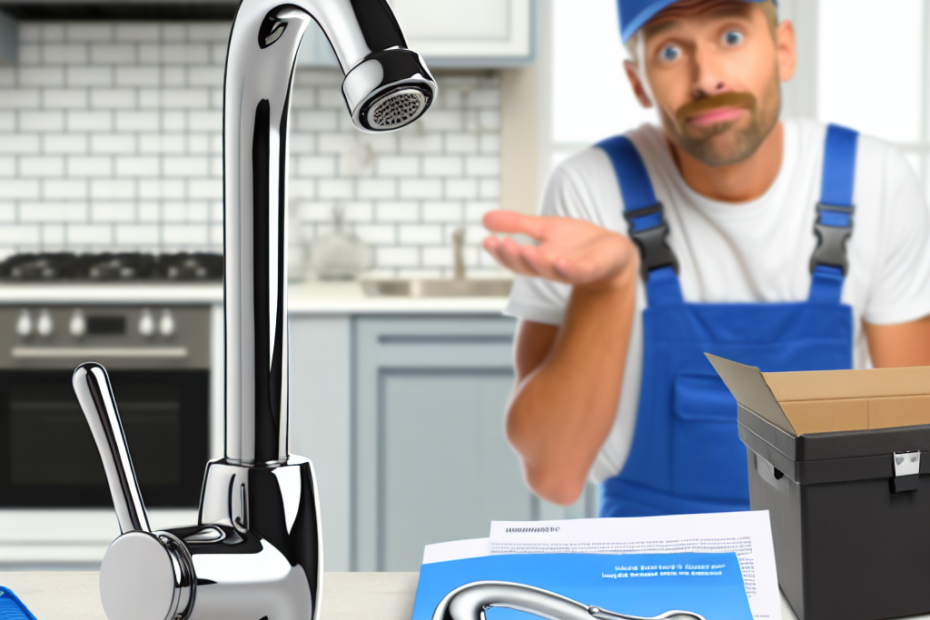Do You Need A Plumber to Install a Kitchen Faucet?
Installing a kitchen faucet is more than just a home improvement task; it's a rewarding project that can enhance both the functionality and style of your kitchen. But, do you need a plumber to get it done? Let's dive deep into this question and explore everything you should know about tackling this home project.
What Is A Kitchen Faucet?
A kitchen faucet is an essential fixture in a home that provides water for cooking, cleaning, and drinking. It's usually mounted on the sink and can feature various designs, including pull-down sprayers, touchless options, and detachable hoses. Understanding the type of faucet you want is the first step.
| Faucet Type | Features | Benefits |
|---|---|---|
| Traditional | Standard dual-handle or single-handle | Classic look |
| Pull-down | Hose retracts into the faucet | Flexible reach |
| Touchless | Sensor-operated | Hands-free use |
Why Would You Want to Install a New Faucet?
There are plenty of reasons to consider upgrading your kitchen faucet:
- Worn Out Faucet: If it's leaking or not working well anymore.
- Style Upgrade: Changing the look of your kitchen might require a new faucet.
- Functionality: Newer models often come with improved features that can make kitchen tasks easier.
Considerations Before Installation
Before you leap into this project, ask yourself a few questions:
- What's the current setup?
- Do I need to change the plumbing?
- How complex is the new faucet?
Grabbing a tape measure would be a good idea at this point! You'll want to measure the sink's dimensions and the existing faucet height to ensure the new one will fit properly.
Tools You Might Need
Here's a handy list of tools often required to install a kitchen faucet:
- Adjustable wrench
- Screwdriver (flathead and Phillips)
- Plumber's tape
- Bucket or container to catch drips
- Towels for clean-up
Faucet installation might seem straightforward, however certain issues can arise. For example, corroded nuts might require extra force or skills to remove the old faucet.
Do You Really Need a Plumber?
Reasons to Go DIY
- Cost-Saving: Hiring a plumber can be expensive.
- Skill Development: Learning home repairs can be fun and beneficial!
- Satisfaction: Completing the project gives a sense of achievement.
When to Call a Professional
On the other hand, there are instances where hiring a plumber is the better choice:
Table: When to DIY vs When to Hire a Plumber
| Scenario | Recommendation |
|---|---|
| Simple faucet switch | Go DIY |
| Major plumbing changes needed | Hire a plumber |
| No experience with tools | Hire a plumber |
| No time to do it yourself | Hire a plumber |
| Confusion about the faucet type | Go DIY with research |
If you are uncertain about the plumbing beneath your sink, it might be best to consult with a qualified plumber. They can ensure everything is installed correctly and efficiently.
Step-by-Step Guide to Install a Kitchen Faucet
If you’ve decided to tackle this project yourself, follow this easy-to-understand guide.
Step 1: Gather Your Materials
Ensure you have all your tools and the new faucet ready. Read the installation manual to understand what parts you’ll need.
Step 2: Shut Off The Water Supply
Find the valves under the sink. Turn them clockwise to shut off the water supply. It’s good practice to open the faucet first to release any leftover water in the lines.
Step 3: Remove the Old Faucet
Use your adjustable wrench to loosen the nuts securing the old faucet. Keep a bucket under for any water that might spill out. If the old faucet is especially stubborn or rusty, you may need some penetrating oil.
Step 4: Clean The Area
Make sure the sink area is clean before you install your new faucet. This helps create a better seal for the new faucet.
Step 5: Install the New Faucet
Follow the manufacturer's instructions closely. Each faucet is made differently, and the specific instructions will usually include diagrams. Position the faucet over the sinkhole, and from underneath, screw counter nuts to hold it in place.
Step 6: Connect the Water Lines
Attach the hot and cold water supply lines onto the new faucet. Use plumbers tape to ensure that everything remains watertight. Remember to check if connections are tight but don’t over-tighten!
Step 7: Turn On The Water Supply
Turn the valves slowly back counter-clockwise to restore the water supply and check for leaks.
Step 8: Test the Faucet
Let the water run for a minute. Check if the pressure feels good and inspect for leaks around the base or joints.
Extra Tips:
- Inspect for Leaks: After installation, it’s a good idea to keep an eye on the faucet for a day or two to see if any leaks develop.
- References: Look for YouTube tutorials or guides that may provide visual help during the installation process.
Maintenance Tips for your New Faucet
- Regular Cleaning: Use non-abrasive cleaner to keep it shining.
- Check for Drips: Ensure that the faucet is functioning correctly and there are no slow leaks.
- Adjust Aerator: Clean the aerator periodically to avoid blockages.
Conclusion
In short, you can install a kitchen faucet without calling a plumber if you feel confident in your DIY abilities. However, if you come across a problem that’s beyond your skills or understanding, don’t hesitate to seek professional help. Remember, quality installation means fewer leaks and longer-lasting fixtures.
The key to a successful installation is research and preparation. With the right tools and knowledge, you can enhance your kitchen space effectively. So, are you ready to get started? Happy installing!
